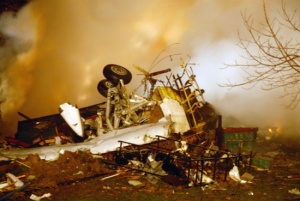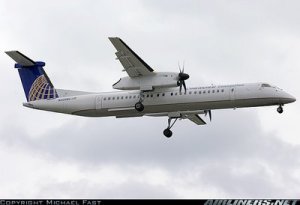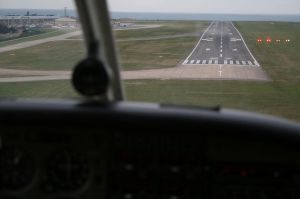
A lot of pilots like me spend more time than they probably care to admit reading aviation accident reports. I am not sure what draws us to them. There is some technical curiosity to be sure, there is the hope we can learn a thing or two from the mistakes of others, and to be frank, I suppose there is a component of Schadenfreude that lurks beneath the surface. After all, since we are alive, we therefore must be smarter and better pilots…right? Or maybe it’s just porn for propeller heads.
In all the years I have scoured these reports, read the transcripts of the cockpit voice recorders and the accident narratives as if they were page-turning suspense novels – I have never stopped being stunned by how blind and deluded we humans can be as we hurtle blithely to our own demise.
There are many examples of shockingly bad, stupid, arrogant or complacent decisions leading to disaster in the air. Off the top, I think of of KLM 4805 in Tenerife…Avianca 52 in Long Island…or Comair/Delta Connection 5191 in Lexington, Kentucky.
But I cannot recall reading a CVR transcript that painted a grimmer, scarier picture of poor pilot performance than the one that came out of the black box found in the smoldering wreckage Continental/Colgan 3407 in Buffalo one year ago.
And that is what comes through loud and clear in the final report from the National Transportation Safety Board. The headline you likely will likely remember is PILOT ERROR CAUSED BUFFALO CRASH.
And that is precisely what the airline industry wants you to think. It is always good to blame dead pilots. They can’t defend themselves and it limits an airline’s liability. They want you to believe some bad pilots slipped through the cracks and the crash was an odd aberration. An act of God – or at least God-awful piloting. No more.
Now there is some truthiness to this – and that is why the airlines get away with it. There is no doubt Marvin Renslow and Rebecca Shaw did just about everything wrong on that flight that from Newark to Buffalo. They both were very tired (the CVR captured plenty of yawns) and Shaw complained of a head cold – and the transcript is littered with “[sound of sniffles]”. And it seemed as if they used their flight deck as the platform for a lengthy shoptalk/bitch session – right up until the moment the airplane started falling out of the sky.
And when the impossible to ignore stick-shaker violently awakened them to the fact that they were not paying any attention to an airplane that was about to stall – they responded in precisely the opposite way they had been trained. Renslow should have pushed the throttle forward to the fire-wall – and pushed hard on the wheel – or yoke – to point the nose down so the plane would gain airspeed. This stall recovery procedure is drilled into a pilot’s head since about lesson number three – part of Piloting 101.
As the NTSB put it: “the captain’s response to stick shaker activation should have been automatic, but his improper flight control inputs were inconsistent with his training and were instead consistent with startle and confusion.”
[youtubevid id=”vMy8kZ2_TMs”]
Shaw’s actions – which were apparently unilateral – were also dead wrong. As the plane shuddered, she retracted the flaps – which reduces drag – but also lift – meaning the plane was now in deeper trouble. Their fate was sealed.
Such a horrifying scenario. An airplane running perfectly – in good weather conditions (the small amount of ice they had picked up is not listed as a factor) drops out of the sky purely because the flight crew was not paying any attention to the critical task at hand. So how could a professional flight crew be so horribly – unprofessional?

N200WQ - the Colgan Q400 that crashed in Buffalo On February 12, 2009
Was it just something about these two pilots? A horrible confluence of minimal experience (Renslow had only about 100 hours on the de Havilland Canada DHC-8-402 Q400 – Shaw about 700) – fatigue and illness? Was fate the hunter in this case? Or were there deeper contributing causes?
A month before we had all watched and marveled as Sullenberger and Stiles ditched that Airbus so deftly in the Hudson River. Continental/Colgan 3407 was the negative image of that event. From Sully – to sullied.
The two crashes offer cases in point for the consequences of a fundamental change in the way we fly in this country that you probably have not noticed. Since deregulation in the late seventies, the large, legacy carriers have outsourced much of their flying to smaller commuter – or regional – carriers. Now more than half of the airline departures in this country are flown by the regionals.
They operate under the same FAA rules than their bigger benefactors play by, but the latter generally exceed those the minimums in nearly every category – while their smaller contractors squeak by right where the bar is set.
The livery and logo on that airplane was all Continental – and the passengers probably all thought they were getting Continental levels of service and safety. But they were really flying on a airplane operated by a company called Colgan Air. And Continental? The company makes it a point to stay out of their business – so long as they fly the routes on time. McDonald’s cares more about how their franchisees cook their french fries.
At the regionals, the crews are less experienced, the hours are longer, the pay is much less and the training is not as extensive. And paradoxically, they are flying the most demanding routes in the airline business – lots of time in the weather, in high traffic areas – and lots of segments. It’s the kind of flying you’d like to have a Sully doing for you. But instead, you are getting Renslow.
The FAA and the airline industry insists there is one level of safety among all the airlines – large or small.
But look at the last six fatal airline crashes in this country. All of them were regionals. An unfortunate coincidence?
You decide after you hear from the regional pilots producers Rick Young and Catharine Rentz and I spoke with for the upcoming PBS Frontline documentary “Flying Cheap”. You can see a preview here. And I will tell you more about what we learned tomorrow.






